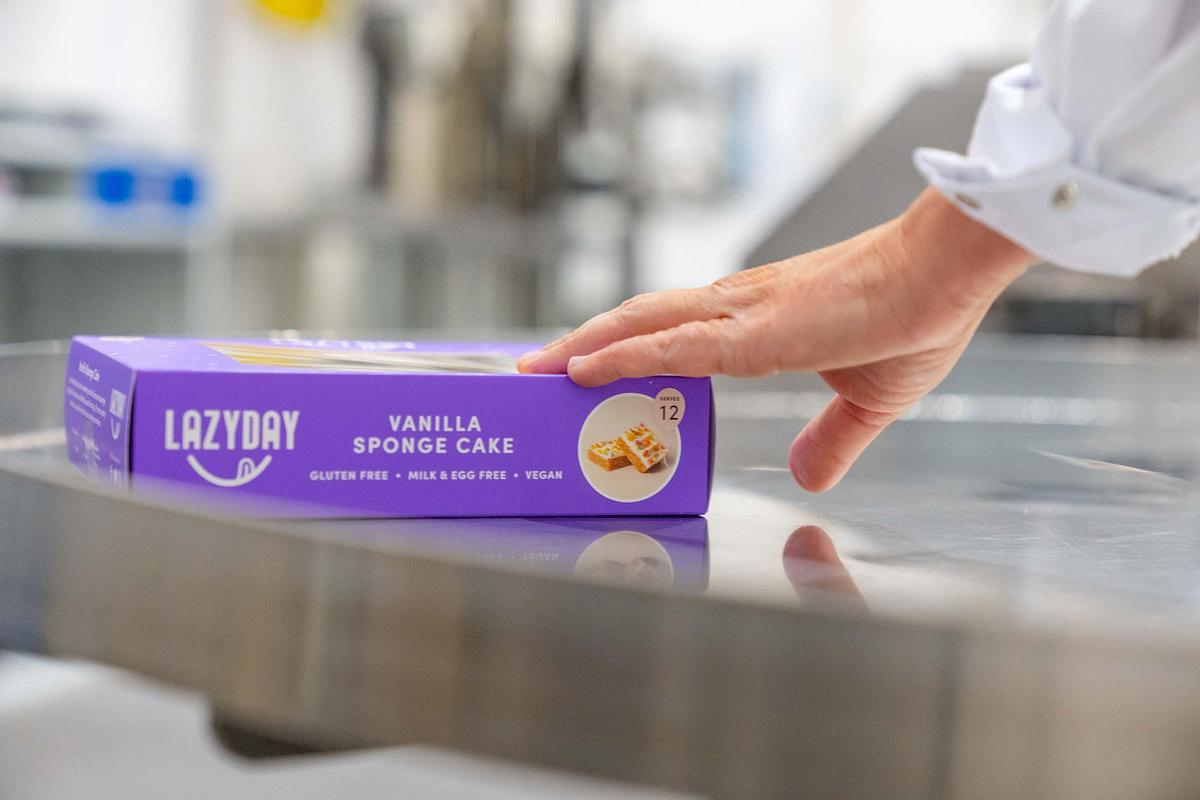Sweet emissions savings for Central Belt bakery
Lazy Day Foods produces 6.5 million allergen-free treats each year in their bespoke bakery in Harthill, the heart of Scotland’s central belt.
Earlier in 2024, Quality, Health, Safety and Environment (QHSE) manager Petya Dimitrova joined the Edinburgh Chamber of Commerce Net-Zero cohort*. After making progress on reducing their Scope 1 and 2 emissions – which they have most control over – Lazy Day Foods were looking for help to tackle their Scope 3 emissions. This covers all other indirect emissions sources, like waste and purchased goods.
Many businesses find this overwhelming, so it’s wise to take it one step at a time. Lazy Day Foods started with the thing they bought most of: chocolate.
“Before joining I wasn’t confident on the differences between Scope 1, 2 and 3 or what we needed to do reduce them. The programme clarified the things to focus on now and the things we could look to do later.” – Petya Dimitrova
Belgian chocolate is used in 70% of Lazy Day’s products and has a large carbon footprint (a 2018 study by the University of Edinburgh found that a 40-gram bar of milk chocolate produces 200 grams of CO2). As their most expensive ingredient, they have an extra incentive to waste less.
One source of waste was the production line. Many steps are completed by hand using analogue scales and paper records, which sometimes leads to inconsistencies and overuse of chocolate.
To tackle this, the company introduced digital scales that only allow bakes to progress if the weight of ingredients is in a set range. Staff report that it is now much easier to weigh up the right amount of chocolate. Meanwhile, the margin of error has dropped to 1-2g from up to 20g in some cases.

Petya asked production line staff for waste-cutting ideas, recognising that they are experts in how each step of the baking process works. This uncovered several easy, low-cost changes that could be implemented quickly. For example, one person noticed that a machine had settings that would help to remove excess chocolate from cakes but weren’t being used.
Between April and July 2024, only 0.02% of chocolate was wasted and efficiency was at 99.6%. Using this baseline data, the company has now started long-term monitoring of how different actions impact their waste.
They’ve also discovered opportunities to save energy. For example, their tunnel used for cooling chocolate. Set up in the middle of the factory floor and surrounded by a lot of hot equipment, it was using a lot of power to keep to temperature. By moving it closer to the wall, where it can make use of the colder outside air, they have saved on electricity and coolant.
By zeroing in on one aspect of the business – chocolate – Lazy Day Foods have not only reduced waste and energy consumption, but also time spent on cleaning: the icing on the cake!
Top Tips from Lazy Day Foods
- Don’t be afraid to automate. You can still retain the qualities of being a hand-made producer while introducing new technology and tools.
- Keep your staff engaged. Make sure you recognise someone whose suggestion has made has a positive impact.
- Record your usage! When you know how much of a resource you are using, it’s easier to see the opportunities for saving waste.
Learn more
If you are still rearing to go, then we invite you to sign up for Climate Springboard, a free business support programme by Edinburgh Climate Change Institute. It’s designed to equip SMEs in Scotland with the knowledge and tools to start out on their journey to net zero.
It lasts just over a month and is completely free. At the end, attendees leave with a company carbon footprint, a template for a long-term net-zero strategy, and a tailored list of quick ways to lower emissions and costs.
*Lazy Day Foods participated in the business support project managed by the Edinburgh Chamber of Commerce. The project is in partnership with Scottish Enterprise to help guide Scottish businesses towards achieving Net Zero emissions, aligning with the Scottish Government’s 2045 target.